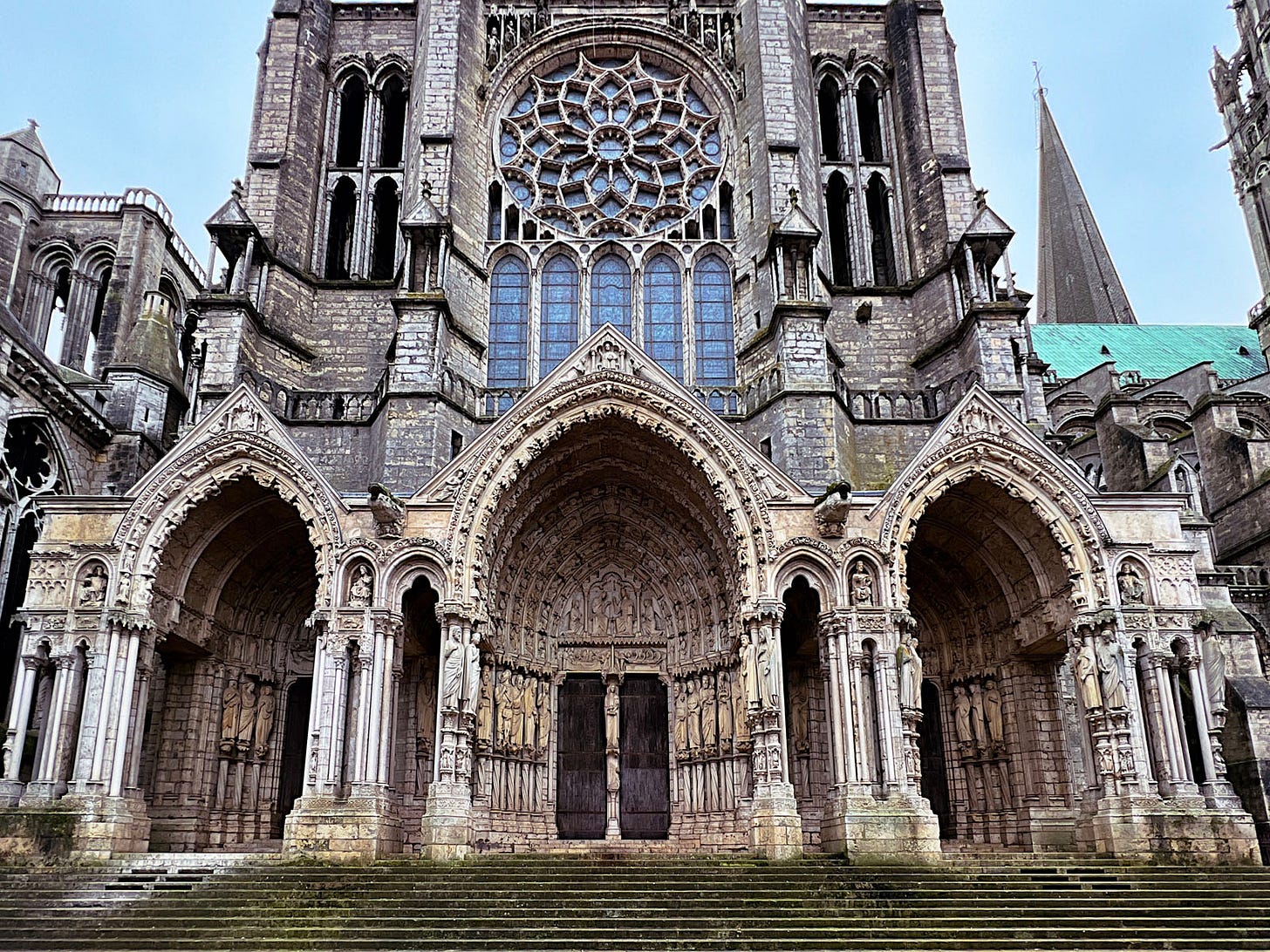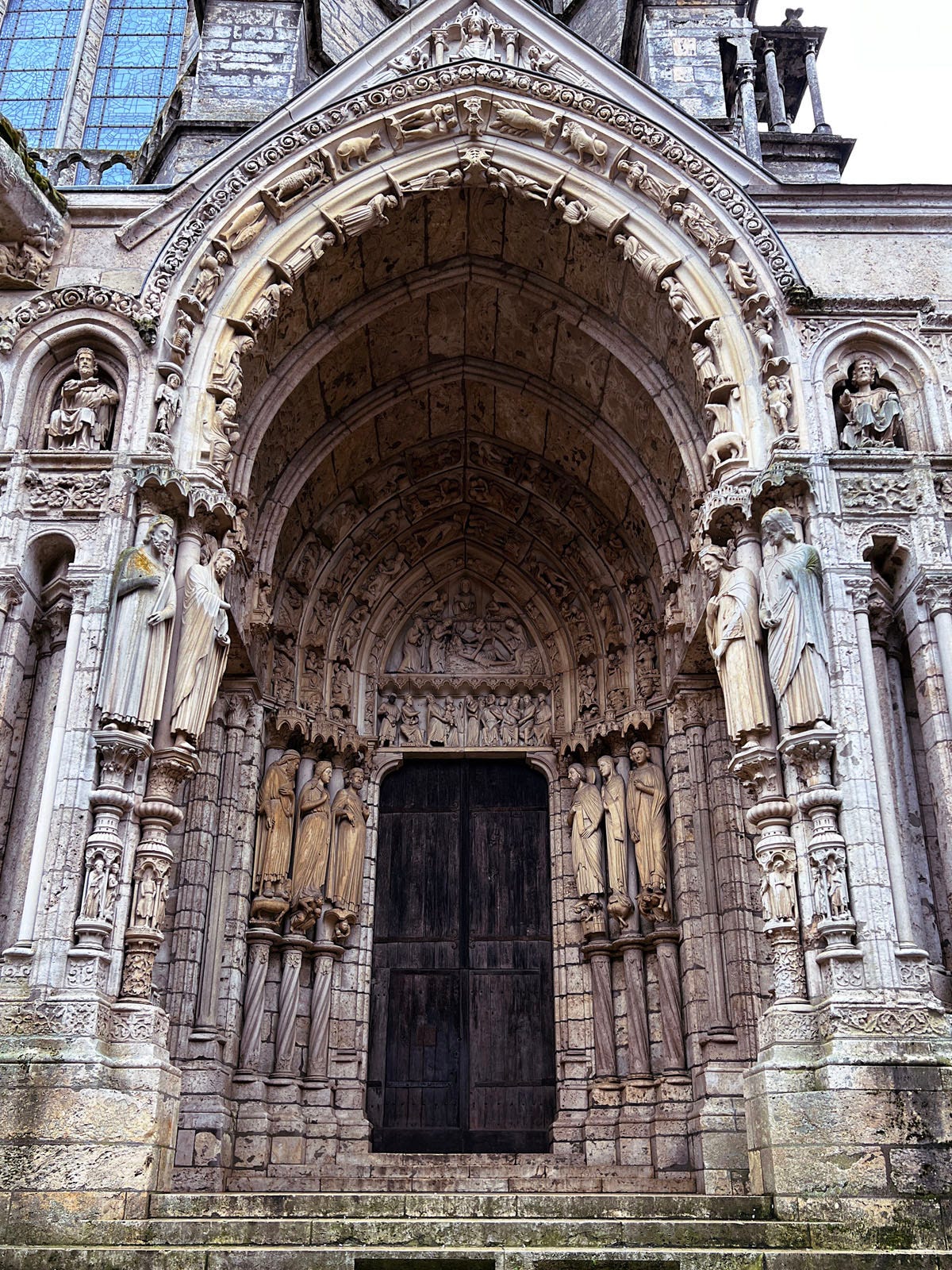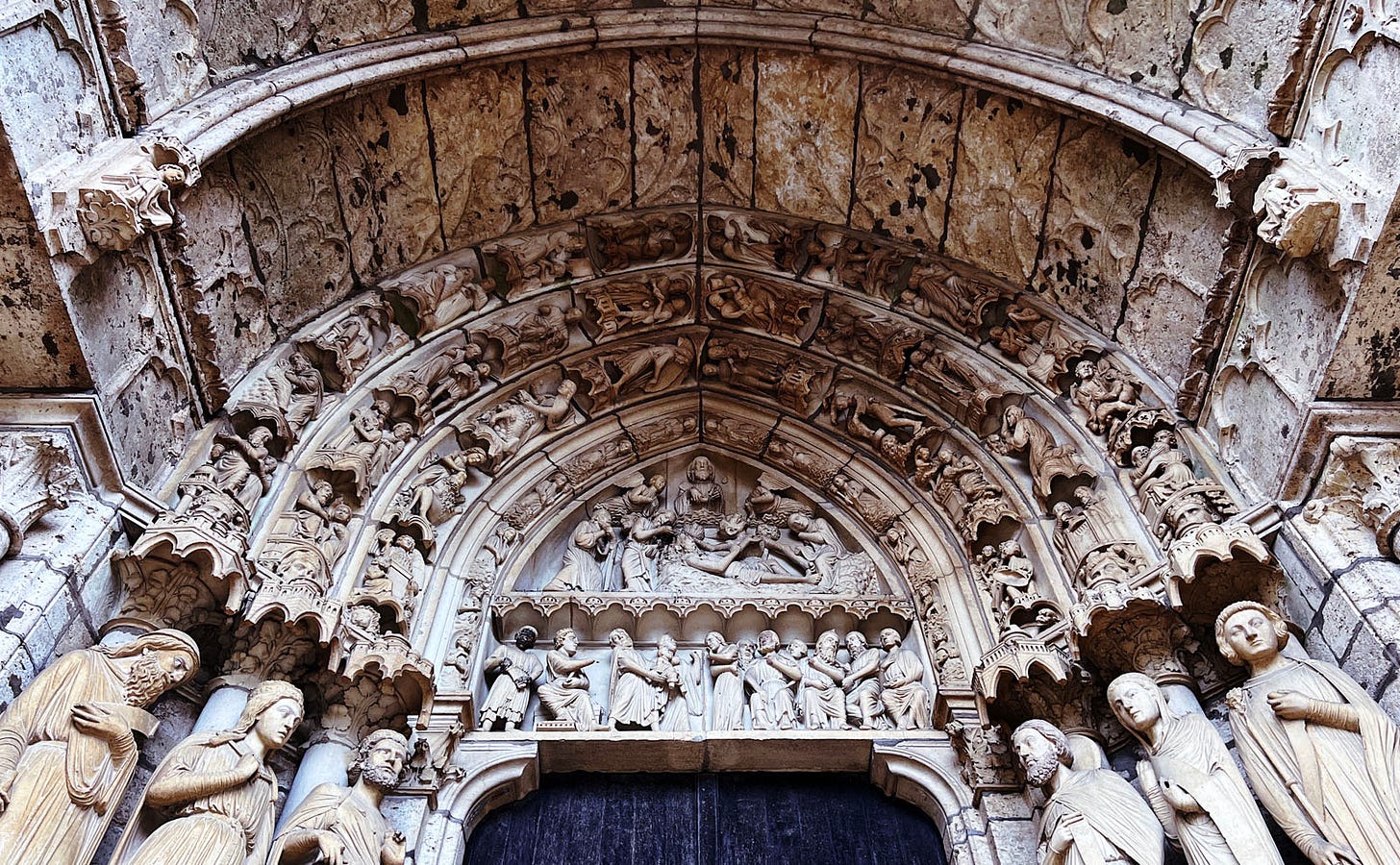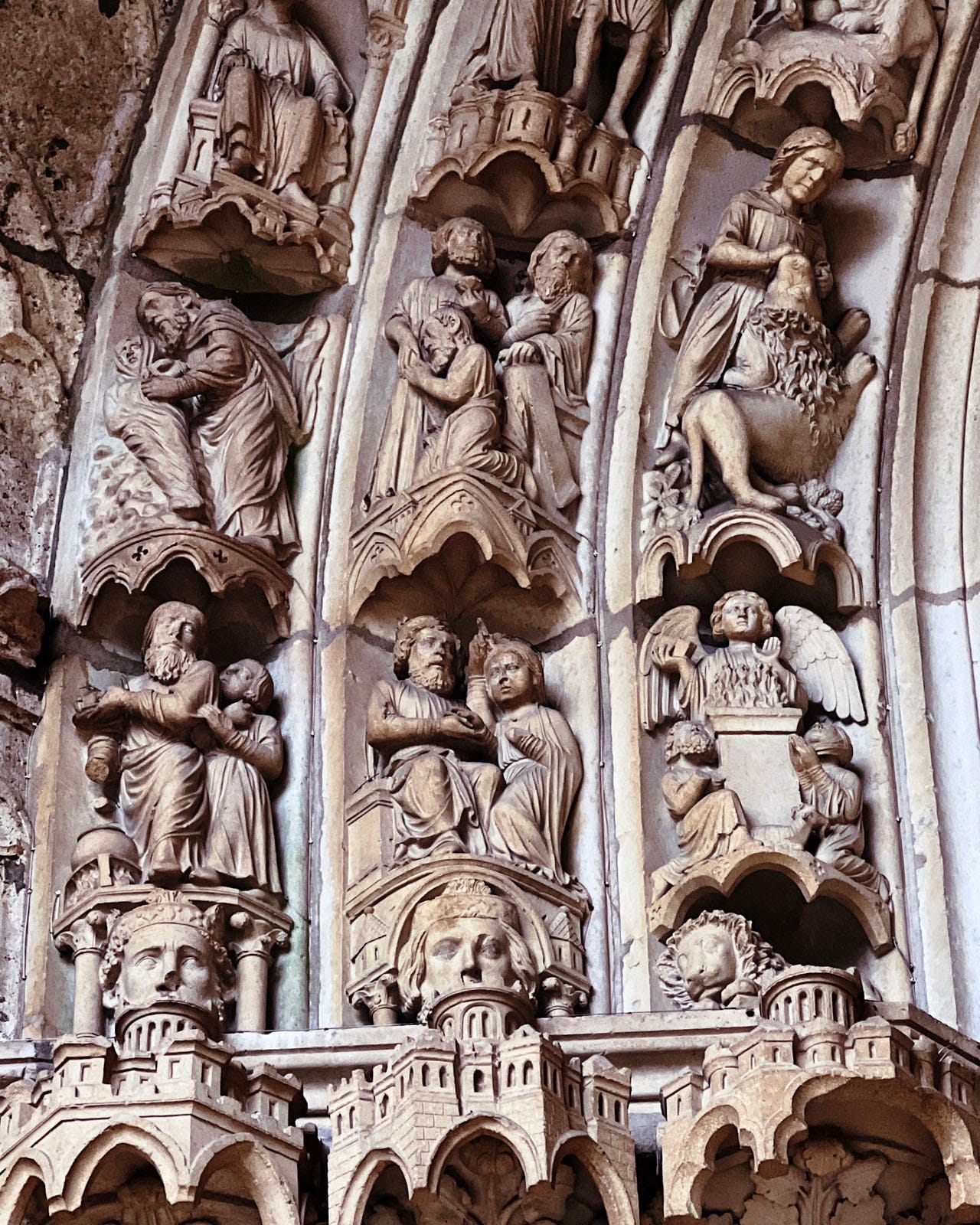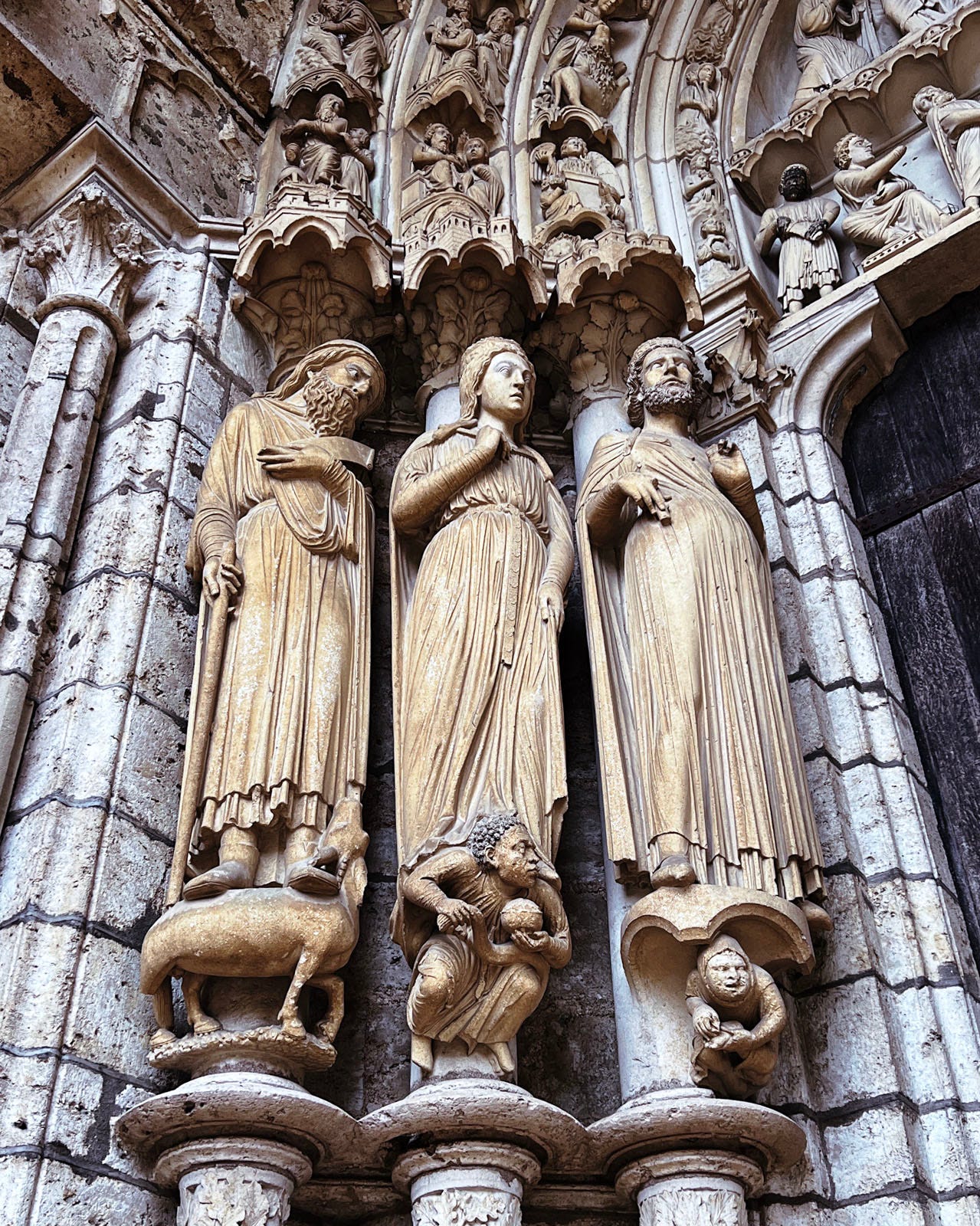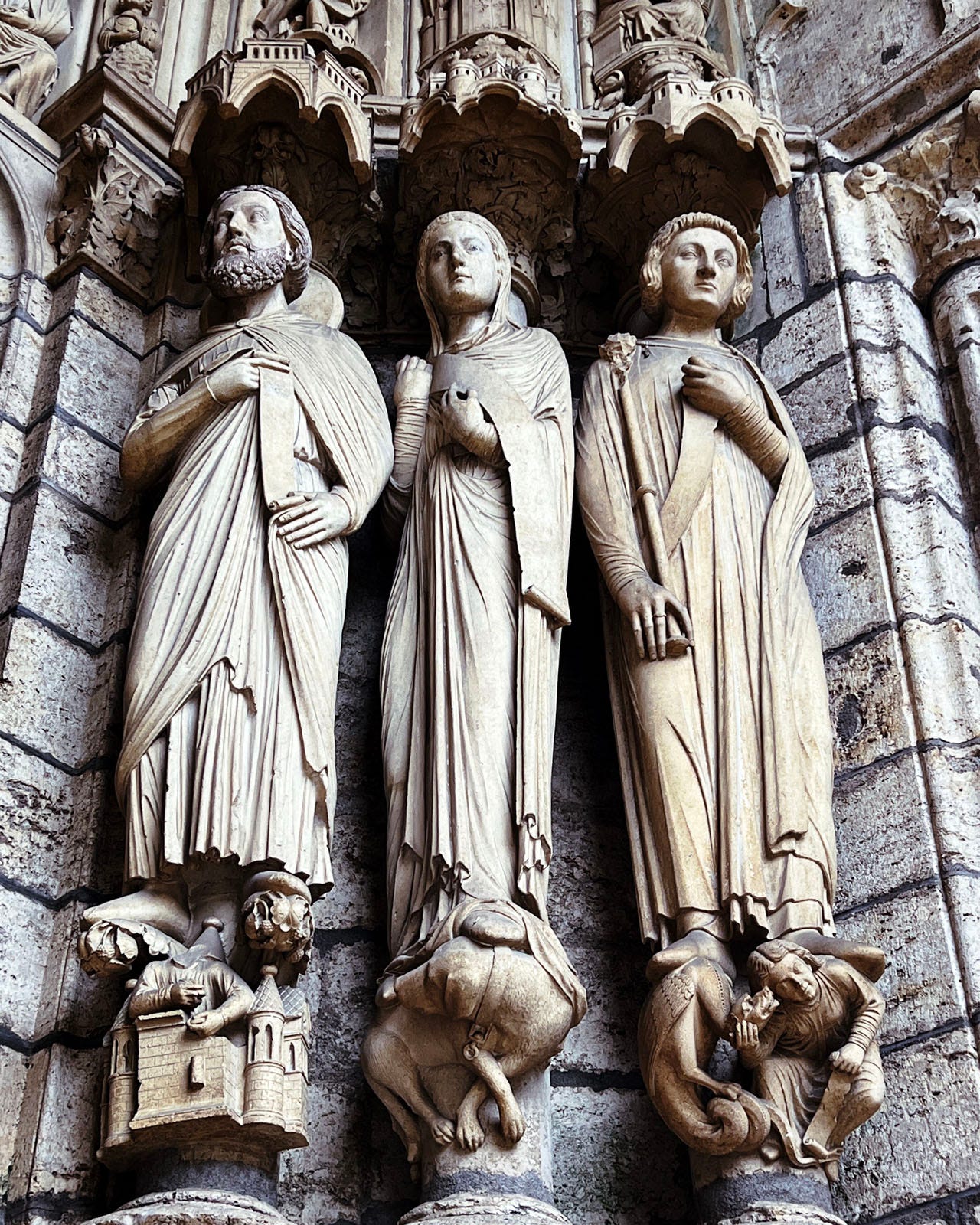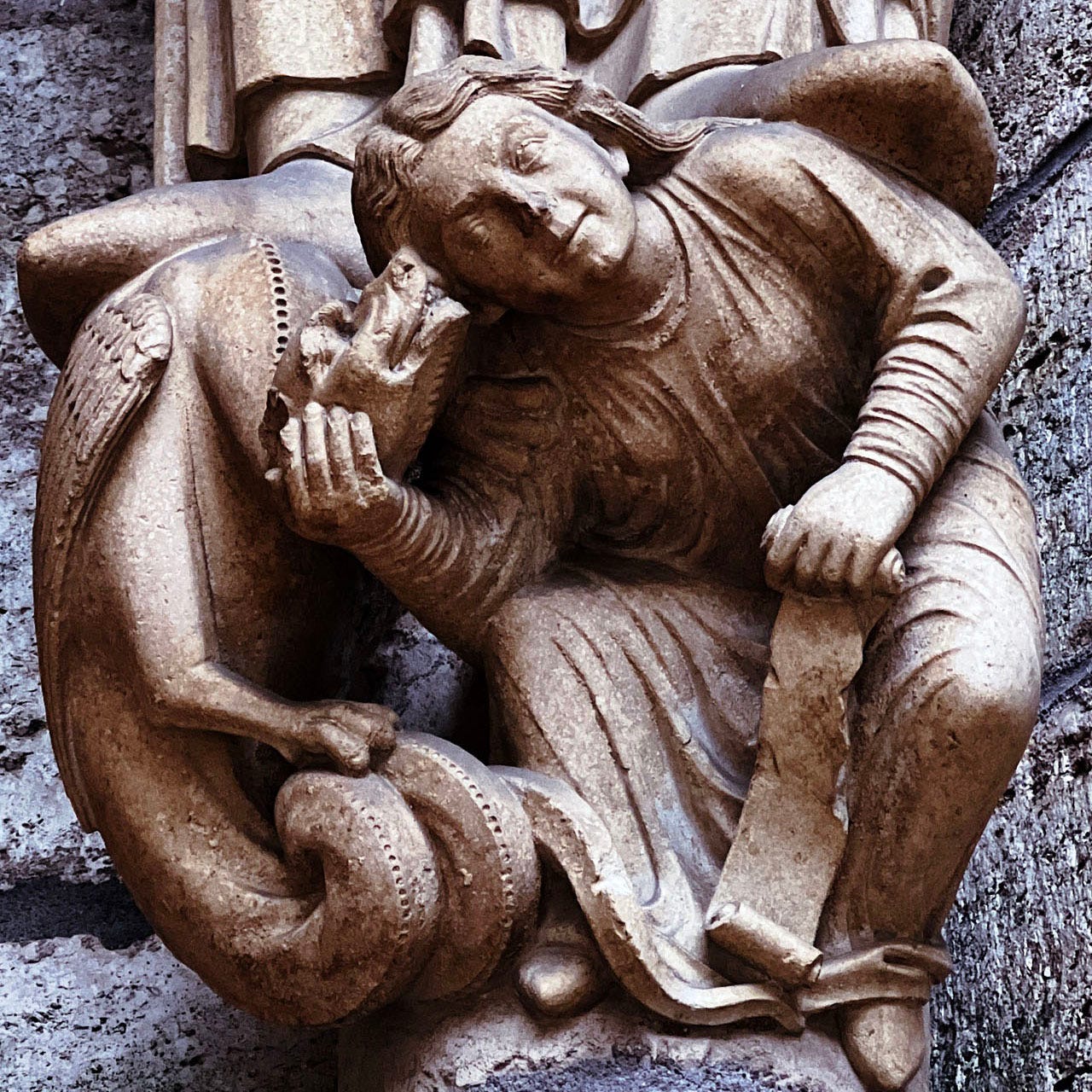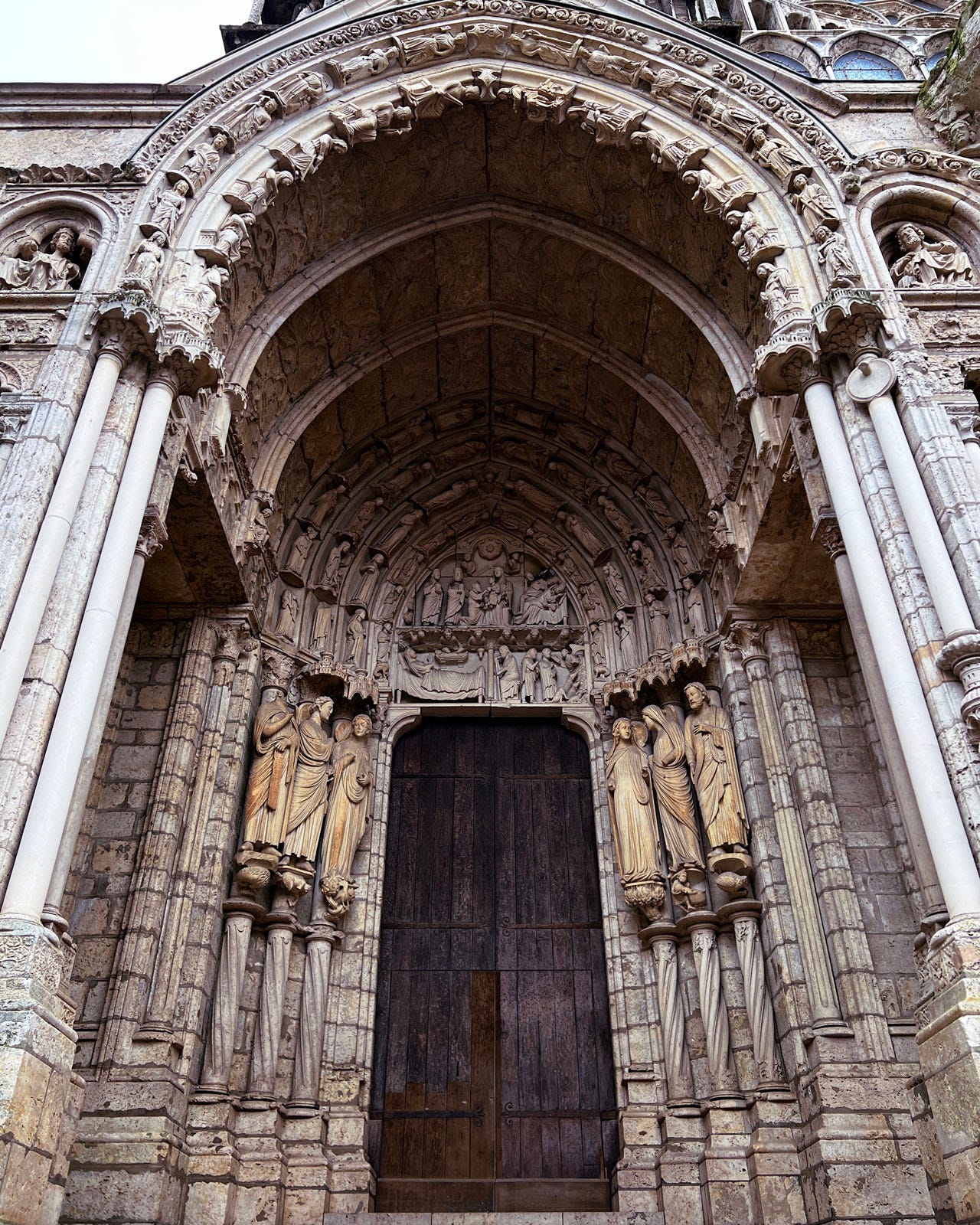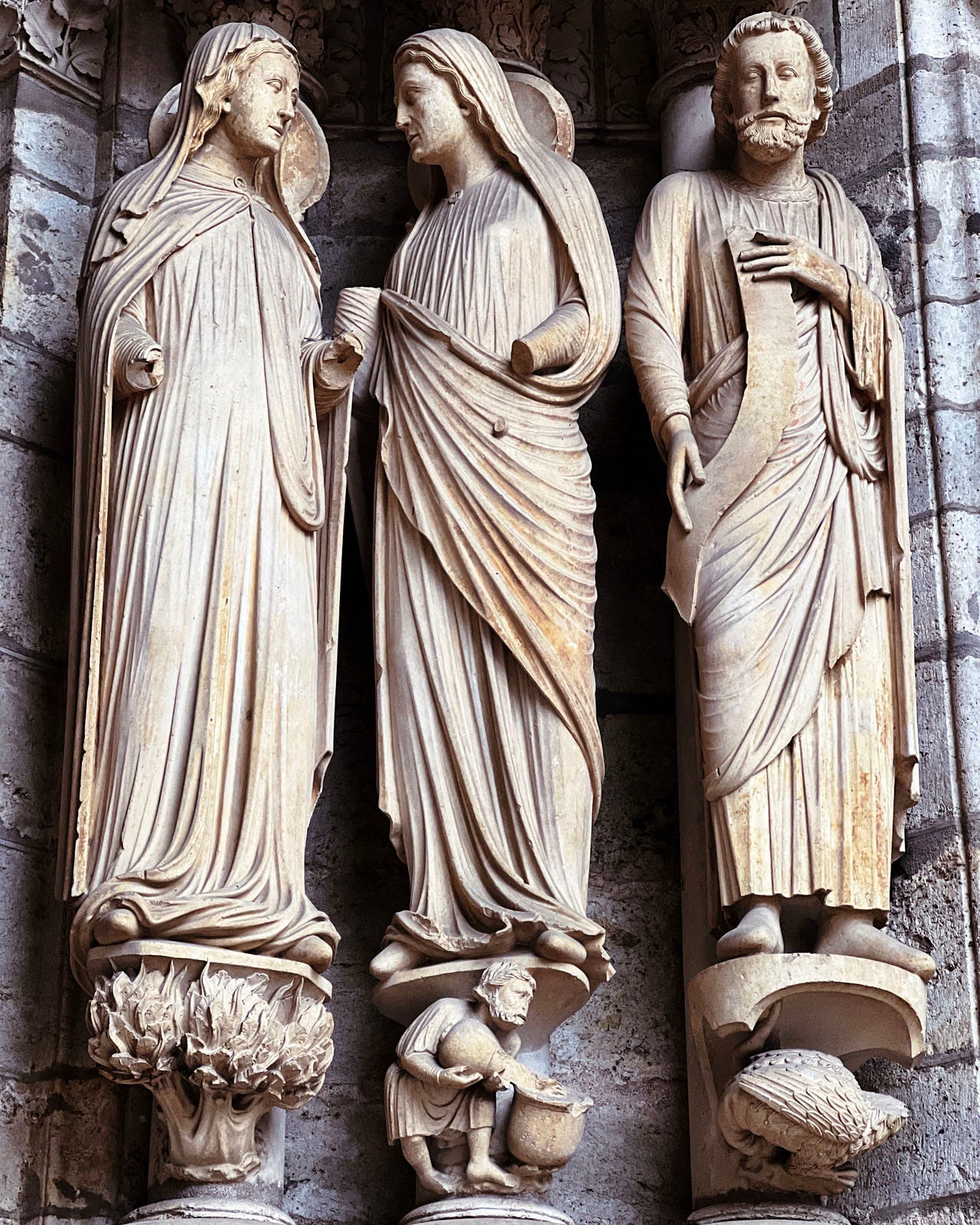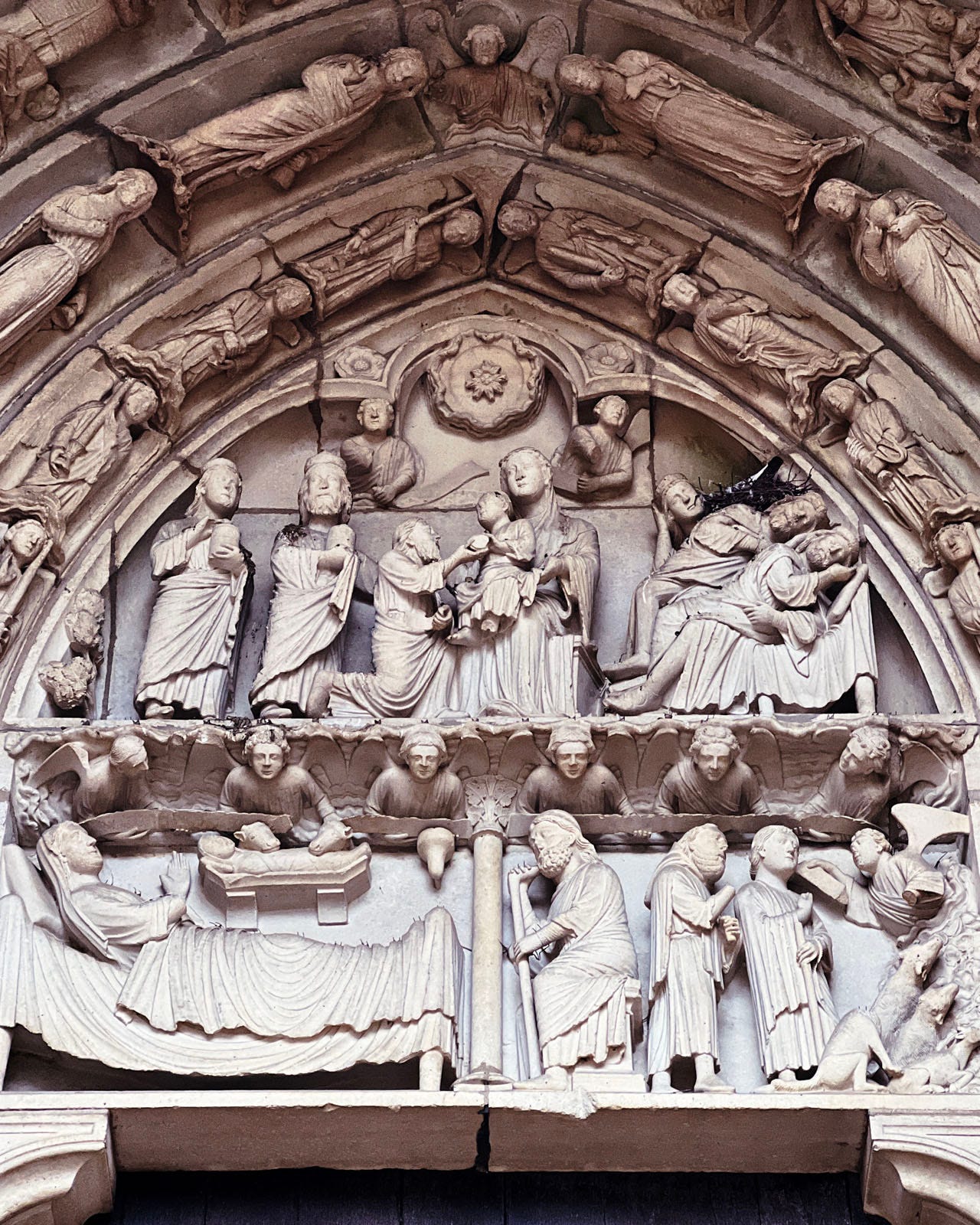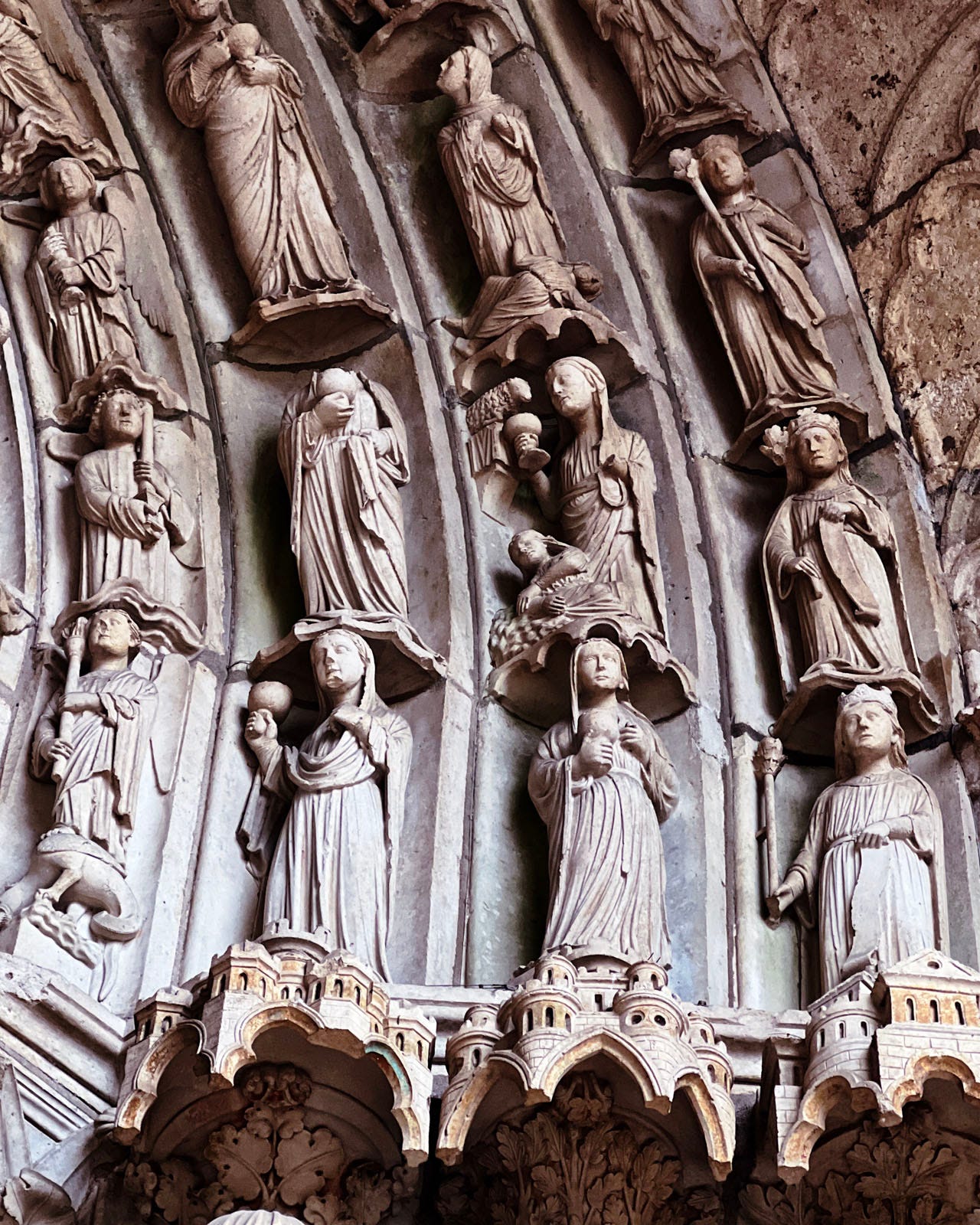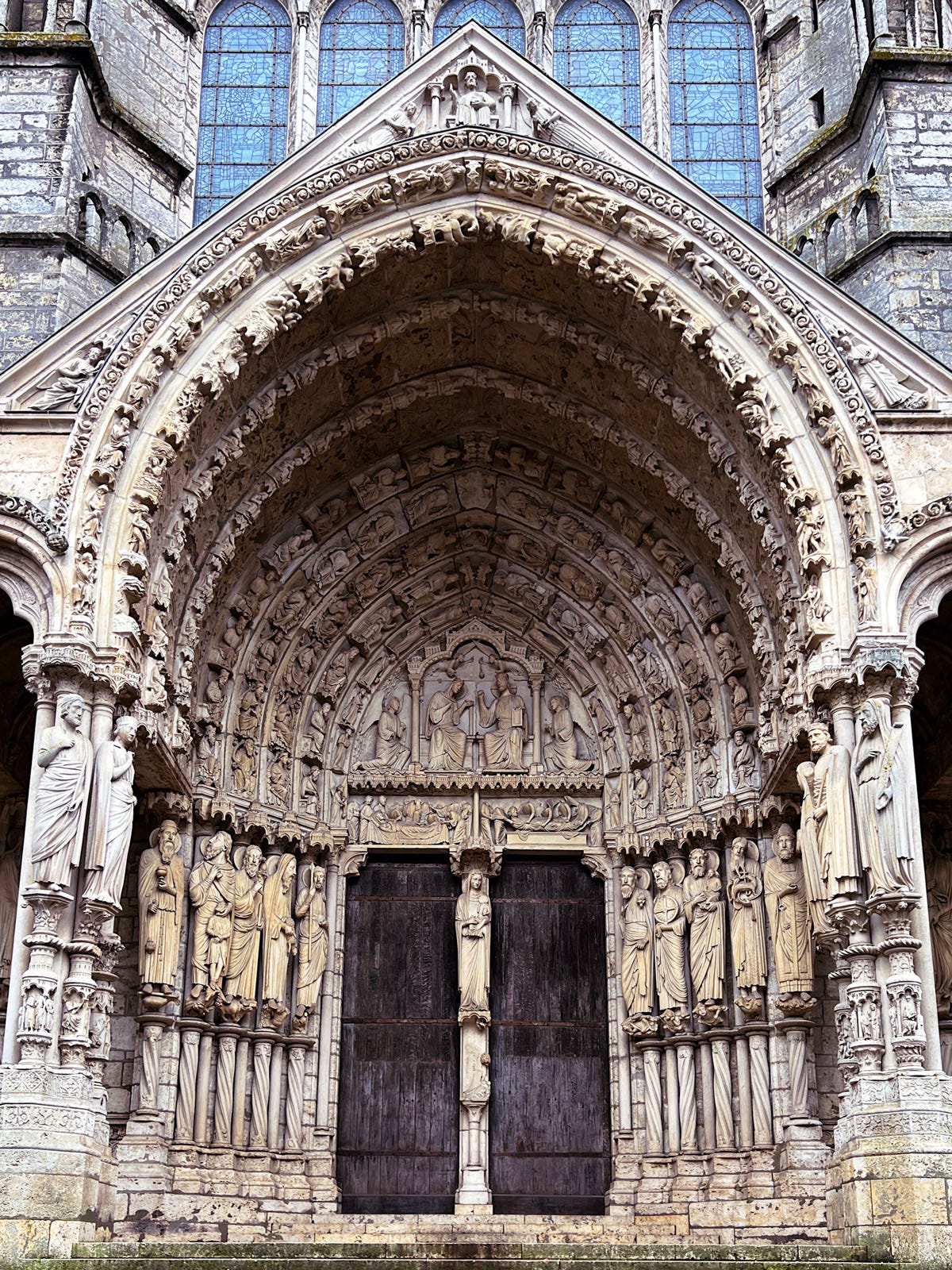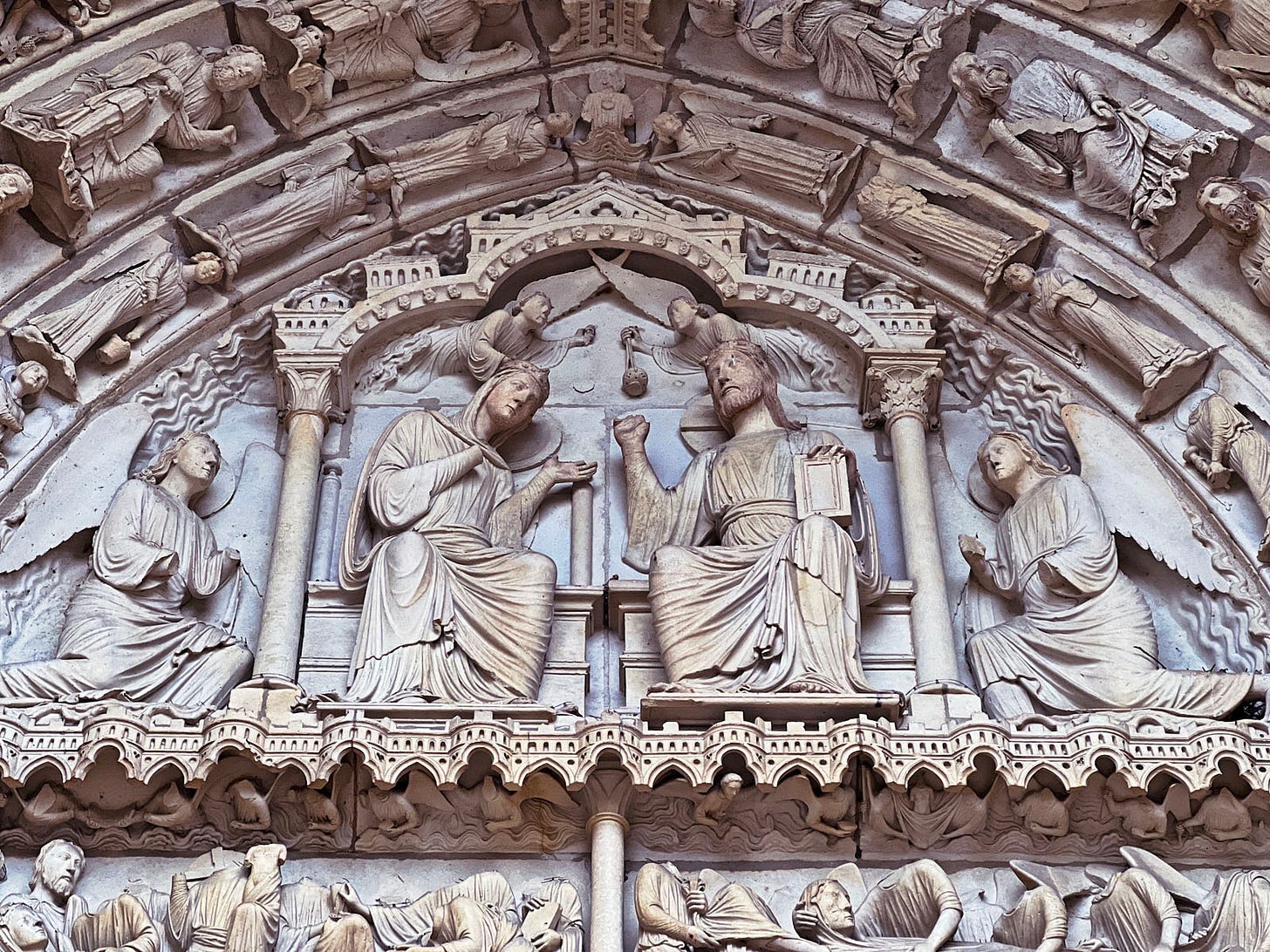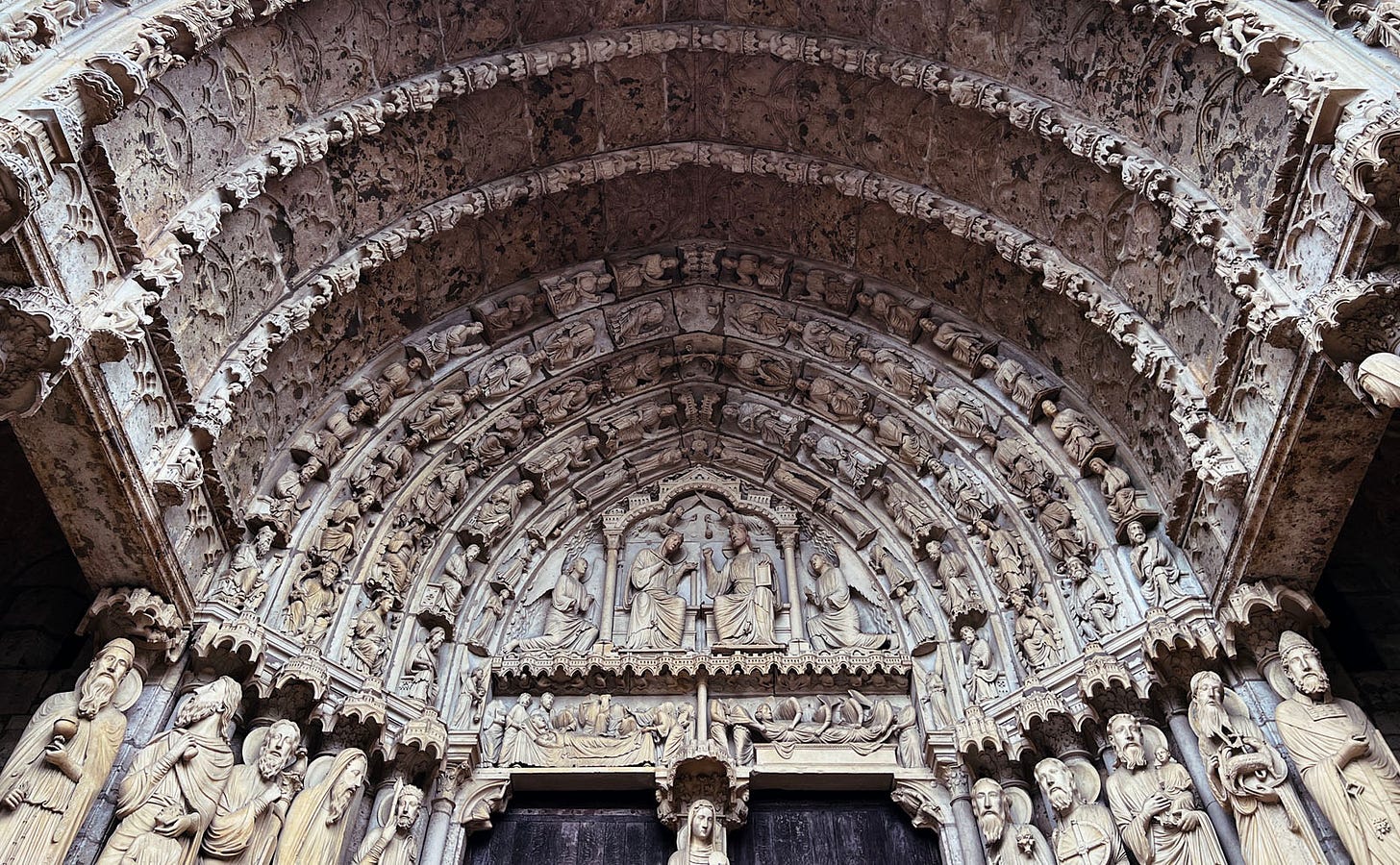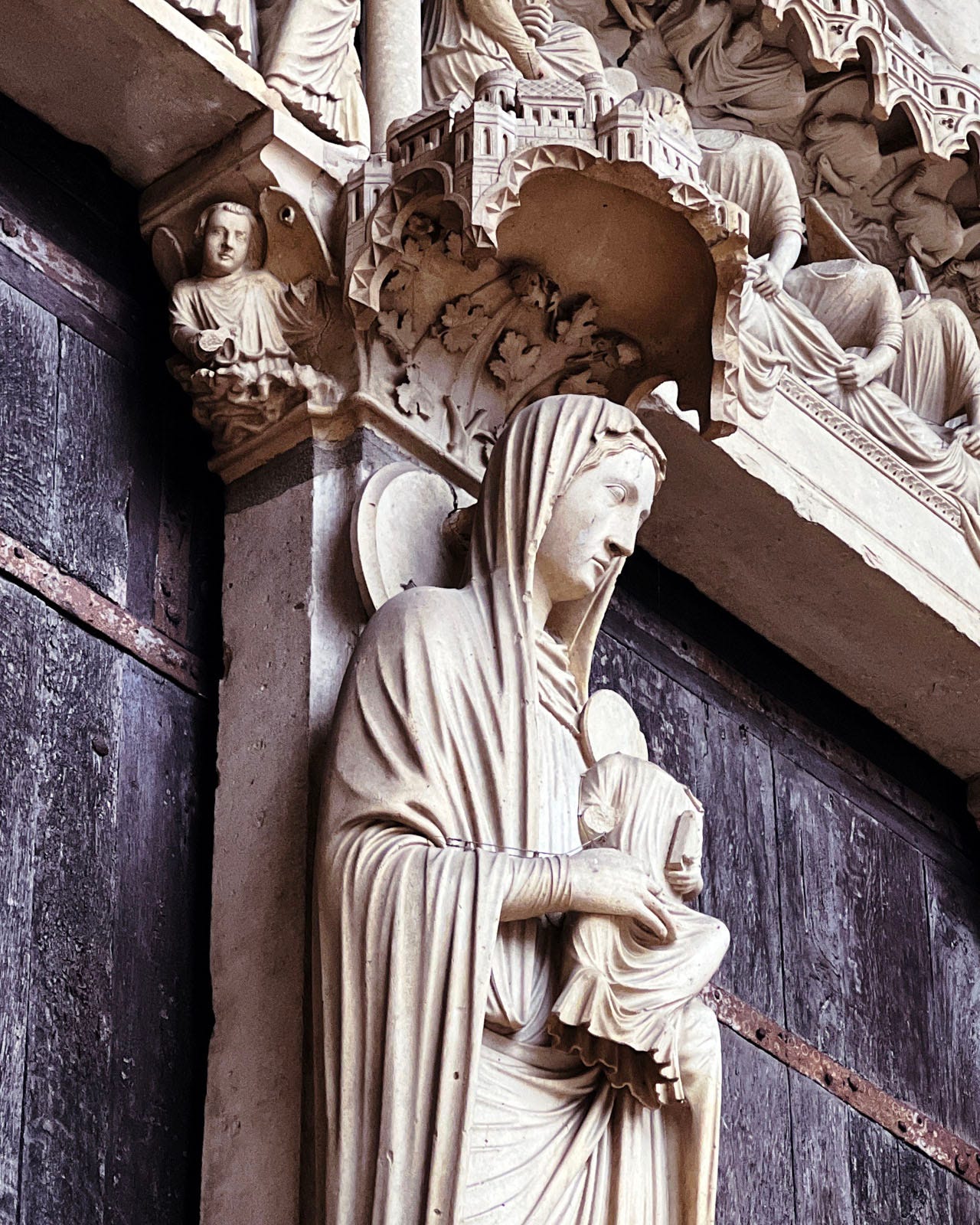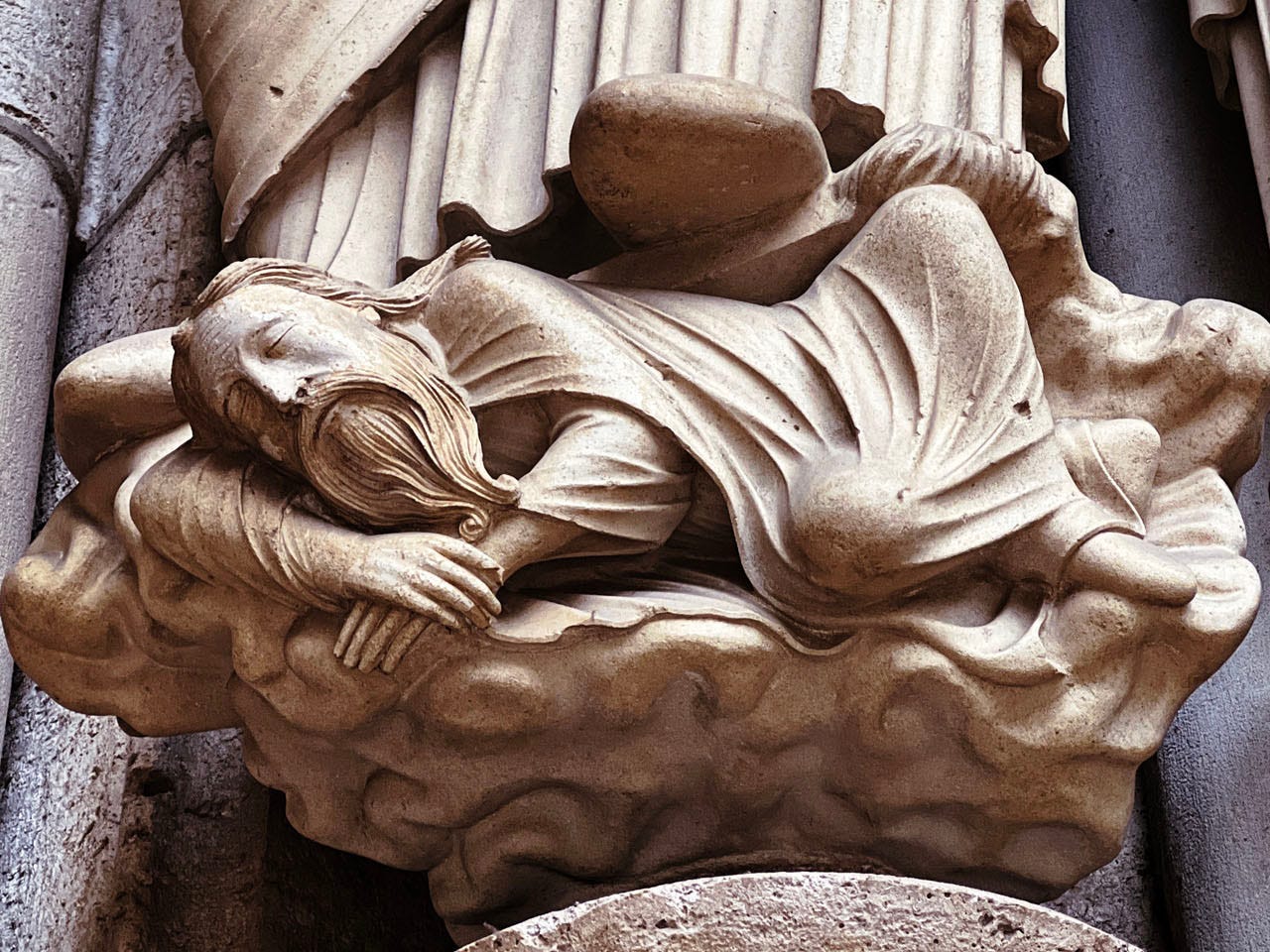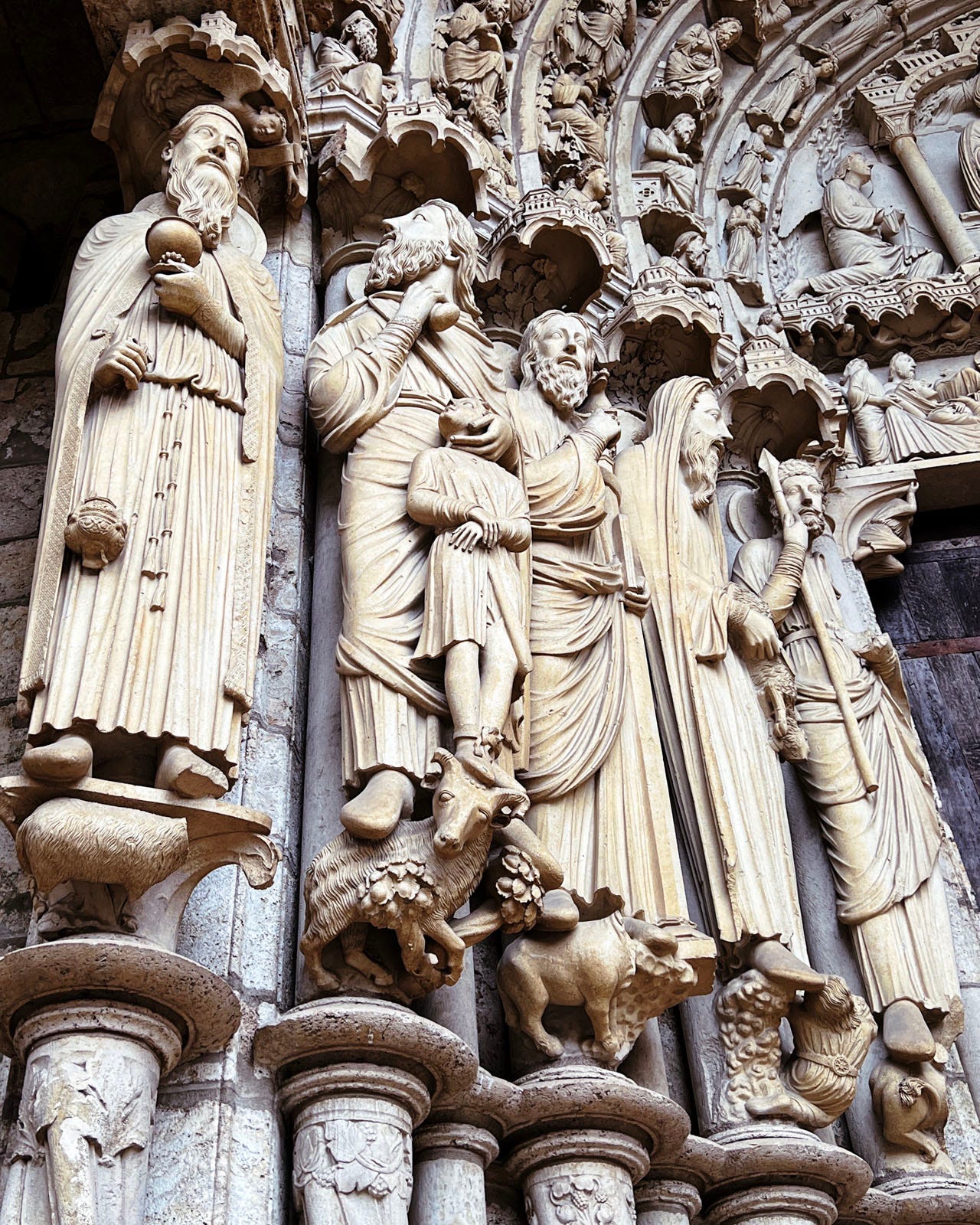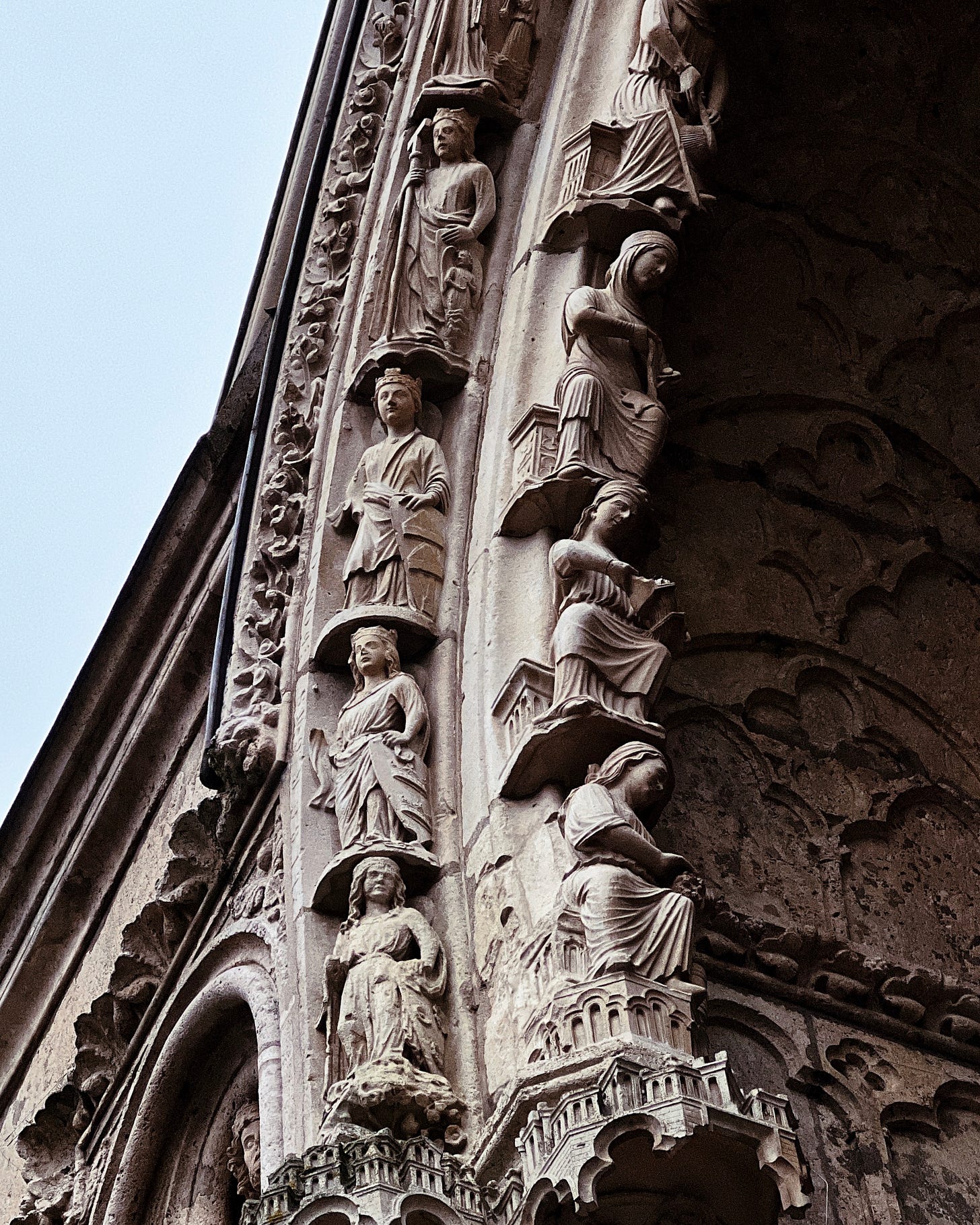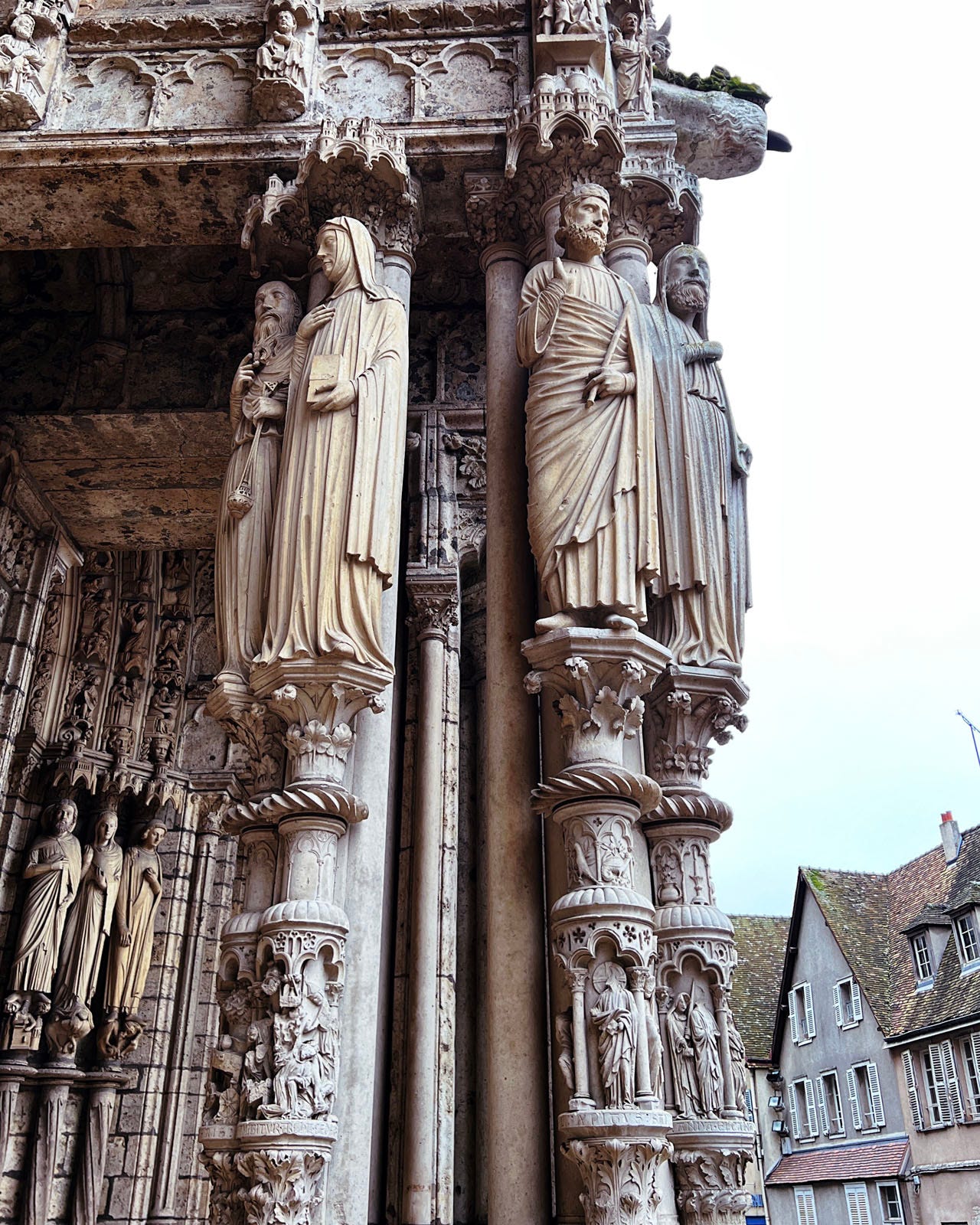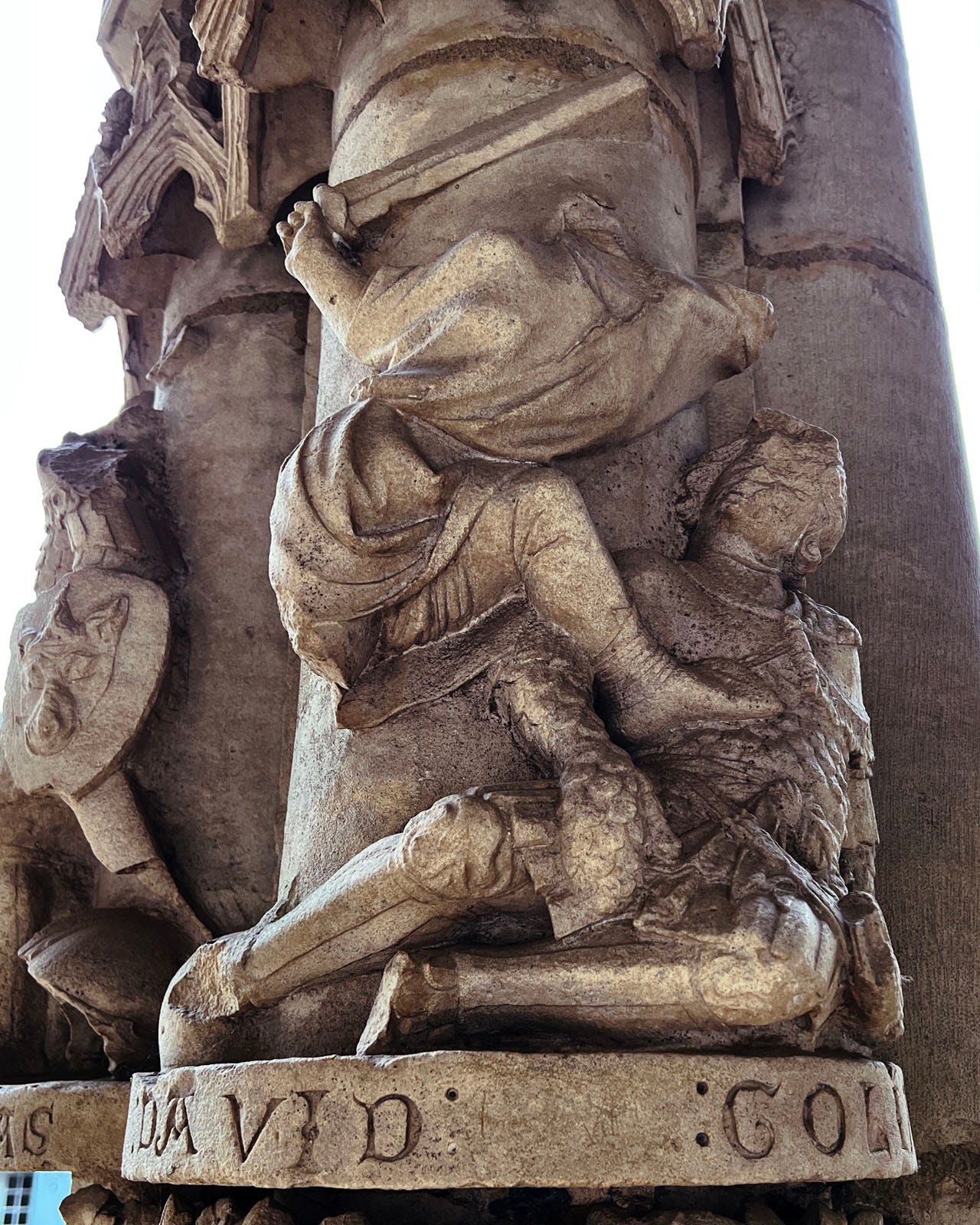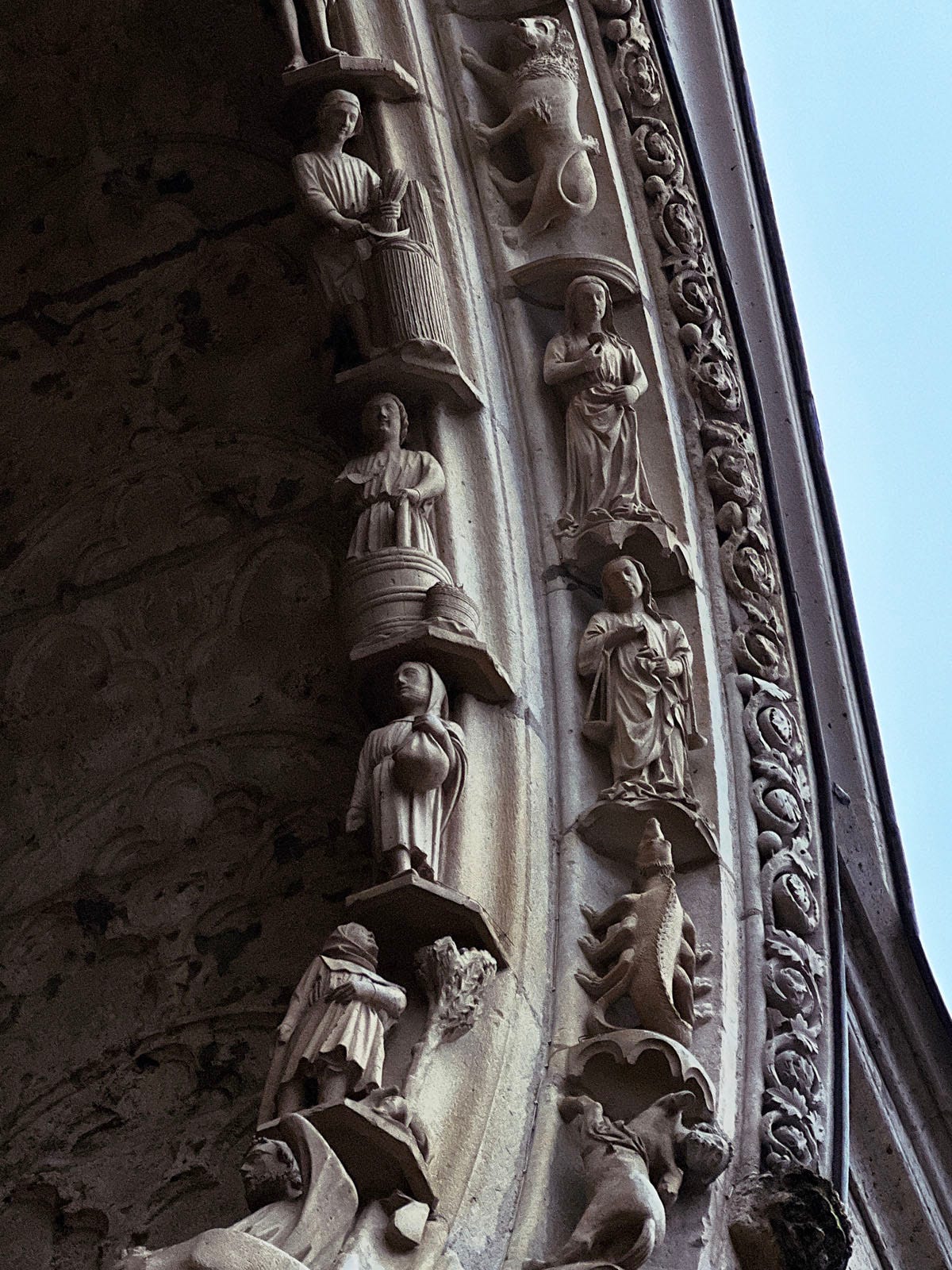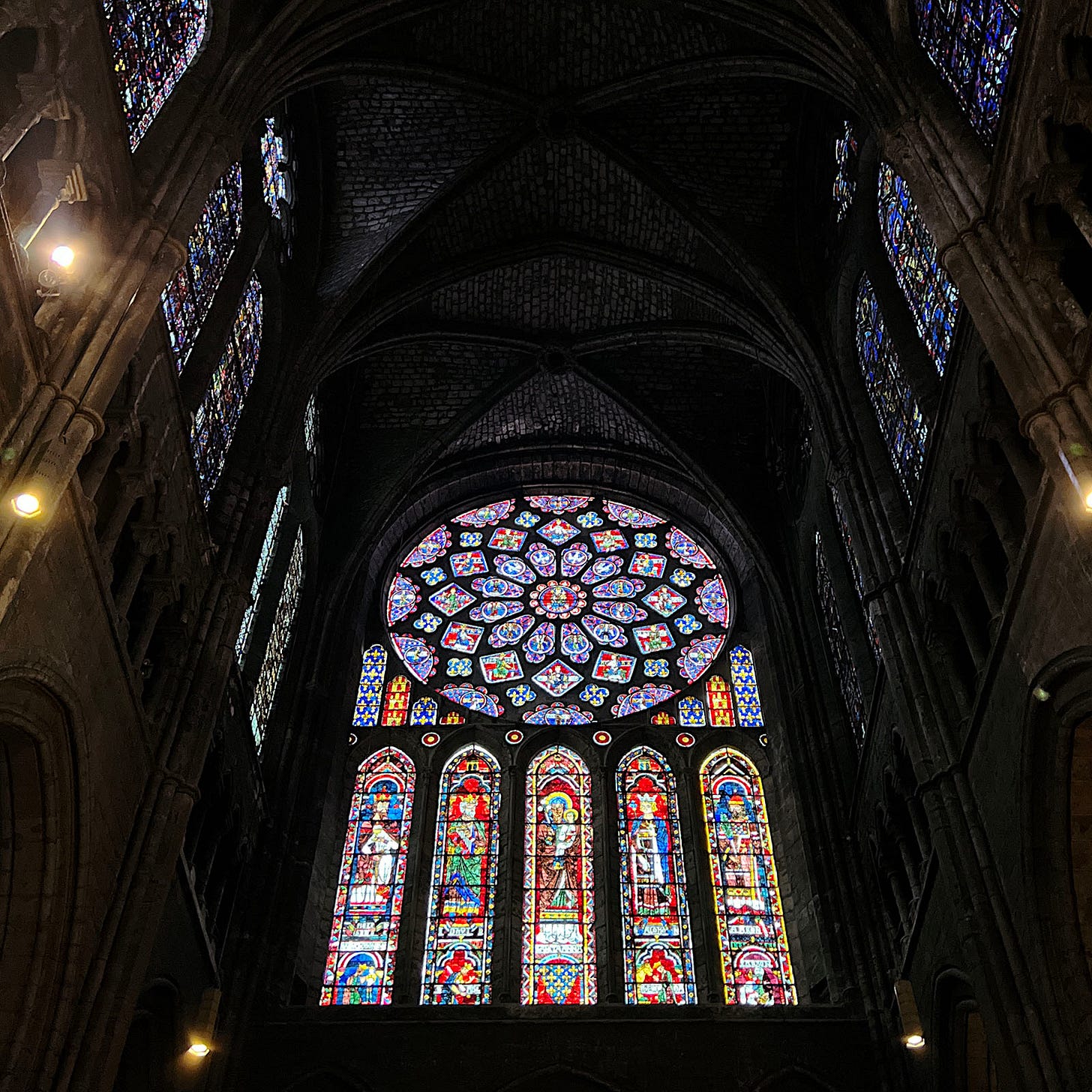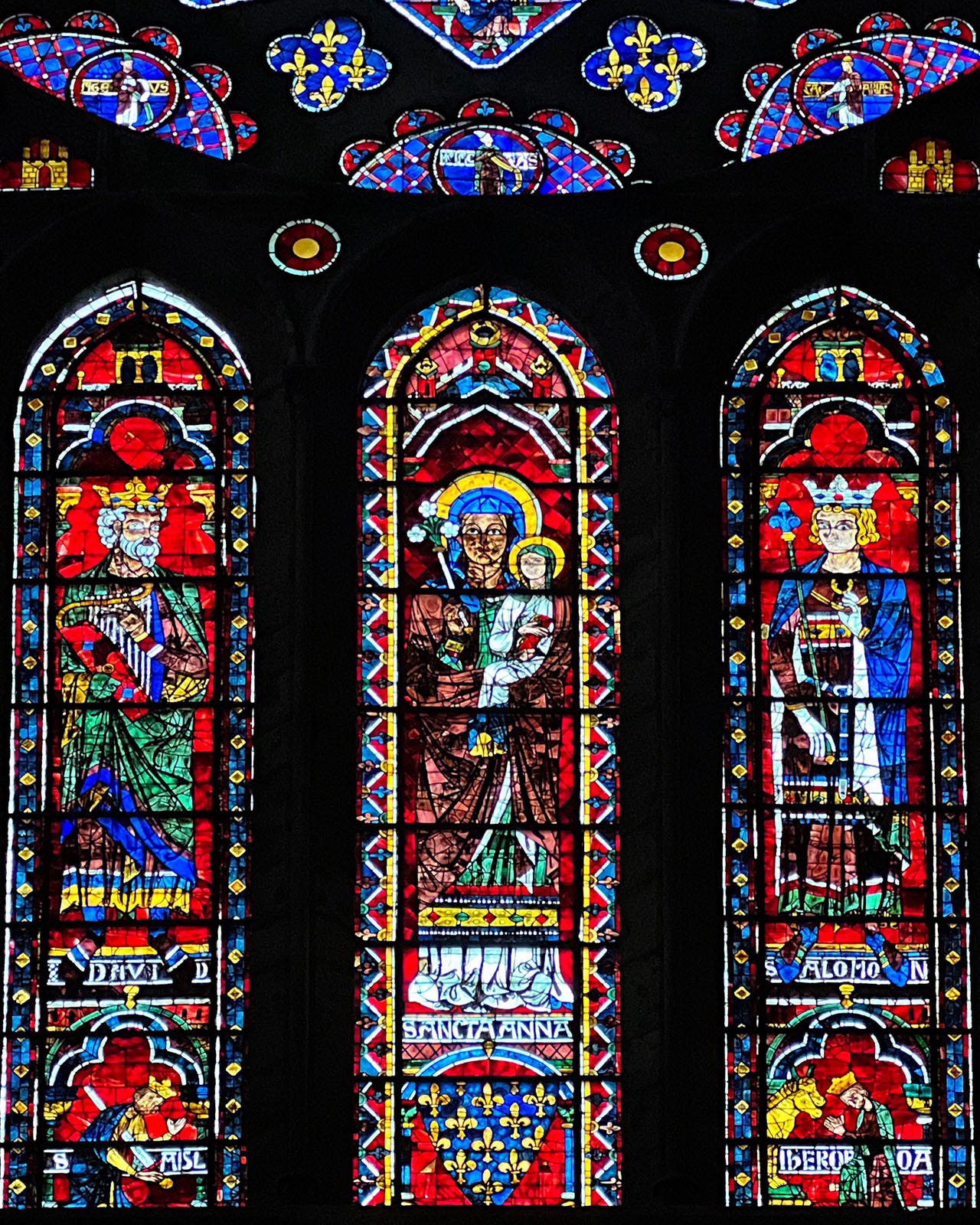(8 min read) This three-part essay is a detailed case study of the greatest Gothic portals of all time. Part I provided an overview and examined the west portals. In this Part II, we make a close study of the north portals, and Part III is about the south portals.
As I mentioned in Part I, the north and south portals here were created a few generations after the west portals. While the west portals were created at the very dawn of the Gothic style, by the time the transept portals were designed and built in the early 13th century, the Gothic movement was in full swing and cathedrals all around north France were competing to be the greatest in some way or another.
We see two primary differences between the transepts and the west portals due to this multigenerational gap in their construction. For one thing, the sculptures become more technically refined and lifelike — these are some of the most beautiful sculptures of the Gothic era. Additionally, the bishop and builders decided to elaborate the portals by enclosing them in massive porches, greatly increasing not just their scale and grandeur, but also the amount of sculptural program available to the artisans and thus the amount of narrative that can be shown.
When you include the porches as part of the entry portal sequence, there are truly no other Gothic portals anywhere that are as grand as those of Chartres’ two transepts (figure 1).
The north portals all have a “precursors-to-Christ” theme, and are best read from right to left to center. So we will begin our exploration with the right porch and portal (figure 2).
The Right Portal
Here the tympanum and lintel portray two famous Old Testament stories which can be seen as “precursors-to-Christ.” The tympanum shows Job on the Dunghill, in which Job prefigures the Christ’s patient suffering, while the lintel below shows the Judgement of King Solomon, in which Solomon prefigures the Christ’s wisdom (figures 3 & 4).
Outside the innermost ring of angels, the archivolts (figures 3 & 5) surrounding these scenes show various other Old Testament characters’ narratives. Samson and Gideon are in the right and left respectively of the next innermost archivolt; then we have Esther and Judith, and then Tobias on both sides of the outermost archivolt.
The jamb figures here (figures 6-7) are more Old Testament characters. Of special note on the right side (figure 7) are Judith, who appears directly below the archivolt showing her story, and Joseph, who happens to be standing on an image (figure 8) of Potiphar’s wife listening to the devil before her attempt to seduce him.
The Left Portal
With the left portal and porch (figure 9), we get into the New Testament, but in a way that keeps within the precursors-to-Christ theme of the north transept. With this portal we also get into the Virgin Mary’s story, which — as she is the immediate precursor to Christ — is a secondary theme of this set.
Here the jamb figures begin to relate to each other and create a bit of a narrative between them. The three figures to the left (figure 10) are Isaiah, Gabriel and Mary. Archangel Gabriel and Virgin Mary are enacting, if stiffly, the Annunciation; Isaiah is there to remind one of his prophecy regarding the Savior’s birth from a virgin. On the right (figure 11), we have Elizabeth and Mary enacting the Visitation, with Daniel, whose visions of the “son of man” are also said to prophesy the Christ.
In the tympanum and lintel (figure 12) we have a pair of Nativity scenes. Above we have the Adoration of the Magi on the left and the Magi being warned about Herod in their sleep on the right. Below is a simple Nativity on the left, with the announcement to the shepherds on the right.
The archivolts here (figure 13) show the parable of the Foolish and Wise Virgins as well as the Triumph of Virtues over Vices.
The Central Portal
Moving on to the central portal (figure 14), which is the largest and most important, we encounter the fullest sculptural expression of the Marian theme at Chartres, with the Coronation of the Virgin in pride of place in the tympanum, and her Dormition and Assumption in the lintel below (figures 15-16).
The archivolts around these scenes show the Tree of Jesse (Jesus’ genealogy), which of course ultimately flowers with the Virgin Mary and Christ.
Accordingly, the central trumeau sculpture (figure 17) between the double doors shows St Anne holding her daughter the Virgin Mary, representing the previous generation in the Tree.
And we can see the figure of Jesse himself (figure 18) dreaming underneath the figure of Isaiah in the right jamb (figure 19), along with Simeon holding baby Jesus, John the Baptist, and St Peter. The left jamb (figure 20) shows yet more Old Testamant Precursors-to-Christ, most notably the classic typology of Abraham getting ready to sacrifice his son Issac.
Stepping Back
Stepping away from the portals, we can take in the porches and observe the additional architraves, sculpted figures, and “friezes” of reliefs which often point back to the same themes we see at the portals.
For example, the left porch archivolts (figure 21) show virtuous women per the book of Proverbs as well as the Beatitudes of the Spirit, both themes echoing the porch archivolts of the Wise and Foolish Virgins and the Triumph of the Virtues.
We also see many more figures and Old Testament stories (figure 22), many of which relate back to the portal figures, such as David and Goliath (figure 23).
Some porch iconography stands on its own, such as the Labors of the Month and Zodiac symbols that line the right architraves (figure 24).
The Interior-Exterior Connection
If we step back even further and take in the entire north transept— and simultaneously peek inside the church — we can also see how the geniuses behind the artistic program here even tied the portals to the massive rose window above.
With figure 25 I am simply repeating figure 1, because I want to point out the rose window immediately above the central portal. Recall that the theme of the archivolts here was the Tree of Jesse, terminating in the central trumeau figure of St Anne, and then take a look at figures 26 and 27, which show the rose window from the inside.
The stained glass in the north transept’s rose window and lancets (figure 26) echo the same themes as the central portal. The rose window features a Virgin & Child in the center, surrounded by angels and Old Testament figures. Below, the lancets (figure 27) enact the same iconography in stained glass as the sculpted jamb figures in the portal below, with St Anne in the center and Old Testament kings to either side.
This concludes our tour of the north transept’s porch and portals. In Part III of this series we look at the south transept.





